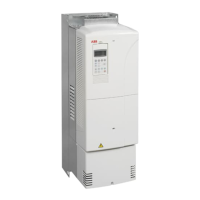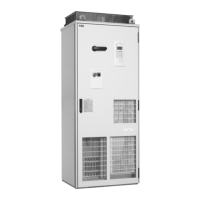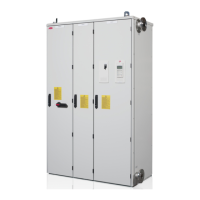Planning the electrical installation
37
Planning the electrical installation
What this chapter contains
This chapter contains the instructions that you must follow when selecting the motor,
cables, protections, cable routing and way of operation for the drive system.
Note: The installation must always be designed and made according to applicable
local laws and regulations. ABB does not assume any liability whatsoever for any
installation which breaches the local laws and/or other regulations. Furthermore, if
the recommendations given by ABB are not followed, the drive may experience
problems that the warranty does not cover.
Motor selection and compatibility
1. Select the motor according to the rating tables in chapter Technical data. Use the
DriveSize PC tool if the default load cycles are not applicable.
2. Check that the motor ratings lie within the allowed ranges of the drive control
program:
• motor nominal voltage is 1/2 ... 2 · U
N
of the drive
• motor nominal current is 1/6 ... 2 · I
2hd
of the drive in DTC control and
0 ... 2 · I
2hd
in scalar control. The control mode is selected by a drive parameter.
3. Check that the motor voltage rating meets the application requirements:
See note 7 below the Requirements table, page 43.
4. Consult the motor manufacturer before using a motor in a drive system where the
motor nominal voltage differs from the AC power source voltage.
5. Ensure that the motor insulation system withstands the maximum peak voltage in
the motor terminals. See the Requirements table below for the required motor
insulation system and drive filtering.
Resistor braking Motor voltage rating
no resistor braking is in use U
N
frequent or long term brake cycles will be used U
ACeq1
U
N
= rated input voltage of the drive
U
ACeq1
= U
DC
/1.35
U
ACeq1
= the equivalent AC power source voltage of the drive in V AC.
U
DC
= the maximum DC link voltage of the drive in V DC.
For resistor braking: U
DC
= 1.21 × nominal DC link voltage.
Note: Nominal DC link voltage is U
N
× 1.35 in V DC.

